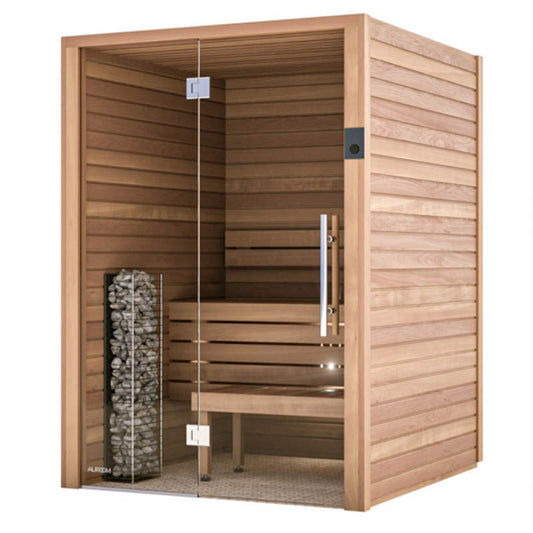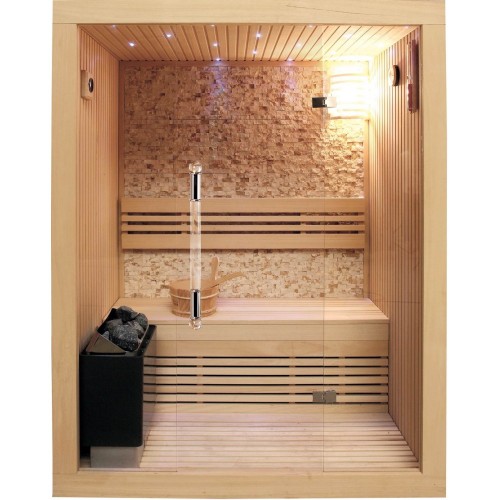The Buzz on Traditional Sauna
The Buzz on Traditional Sauna
Blog Article
All about Traditional Sauna
Table of ContentsThe 7-Minute Rule for Traditional SaunaUnknown Facts About Traditional SaunaThe Traditional Sauna IdeasOur Traditional Sauna IdeasSome Ideas on Traditional Sauna You Should Know
A lot of the weight lost in a sauna is water loss and is re-gained upon rehydrating. Nonetheless, undeniably sauna can be a vital part of a healthy and balanced weight management program. To check out the distinctions between traditional and IR saunas, I will certainly separate these right into verifiable, theoretical, and fabricated differences.Hence, the most popular factor in the saunawhich goes to the ceiling directly above the sauna heateris commonly in between 185 and 190 F. Claims that a traditional sauna goes beyond 200 F is just not true and not applicable for electrical saunas marketed in the US. The temperature for a far-infrared sauna is generally established between 120 and 140 F; nevertheless, unlike the conventional sauna, the objective in and IR space is not to achieve a high temperature level.

When a traditional sauna has actually been correctly heated up, the sauna wall surfaces are cozy, the air temperature level has actually achieved set temperature and the rocks are very warmed. As a fascinating side note, the warmed walls and the rocks are emitting far-infrared warm, incorporated with the heated air, to produce an "enveloping heat".
Traditional Sauna Fundamentals Explained
When the heat is attained, the elements cycle on and off to keep the heat. A lot of typical sauna users take pleasure in pouring water over the rocks to create steam to raise sauna moisture levels. The benefits of pouring water over the rocks include: making the space extra comfortable, dampening the nasal passages, and enabling the use of aromatherapy by mixing crucial oils with the water.

When the energy enters the body, it causes the body temperature to increase and ultimately results in perspiration. In an infrared sauna it is essential for the emitters/heaters to stay on practically regularly. Since there is no mass of rocks to retain warm, the sauna will certainly cool if the emitters turned off.
Top Guidelines Of Traditional Sauna
As discussed over, the sauna bather in an infrared room intends to place himself before operating emitters to obtain maximum take advantage of the warmth. The home heating time for the 2 areas can be really different, relying on how the rooms are utilized. For a traditional sauna, a bather ought to permit 30-40 minutes for the area to attain a wanted temperature level and to properly pre-heat the rocks.

A well constructed sauna will normally attain a temperature of 150-160 F in regarding 30-40 minutes. For hotter temperature levels, the room may require to heat for a longer period.
To some, 15 minutes was "wasted" while the infrared energy heated the timber panels rather than heating a body, while others find a pre-heated space to be much more comfy and think a raised starting temperature is essential to start perspiring. The length of recommended use for every area is about the very same (10-15 minutes per session); nonetheless, as a result of the lower air temperature article source levels and the ability to feel the effects of infrared warm much faster than a conventional sauna, it is not uncommon for a person to invest a total amount of 20-30 mins in an infrared sauna.
The 7-Minute Rule for Traditional Sauna

The typical price per kWH of power in the U.S. is around $0.11, so a 4.5 kW heating system will certainly cost about $.50 to run for one hour, if the heating system runs constantly for one hour. Normally a sauna heater will certainly run for 75% of the first hour my review here and 50% of succeeding hours on given that the components cycle once the established temperature is achieved.
A 2 individual far-infrared room is normally literally smaller than a conventional sauna, frequently regarding 4' x 4' or smaller sized. The IR heating system is generally 1.5-1.7 kW using a 120 volt 15 amp plug-in solution. Considering that the room can be used faster than a sauna area, we will assume the space is used for to of an hour including warmth up time.
There is a hardly ever talked about distinction in the social experience between the 2 spaces. While our culture has actually lost a few of the social benefit of the traditional sauna experience, it can be extremely socially gratifying (Traditional Sauna). From family members time in the sauna, to heart-felt discussions with loved ones, to sauna partiesthe conventional sauna experience can cause intimate interacting socially
Getting The Traditional Sauna To Work
Most higher end infrared rooms include colored light treatment, look at this website audio systems and full-glass fronts.
Report this page